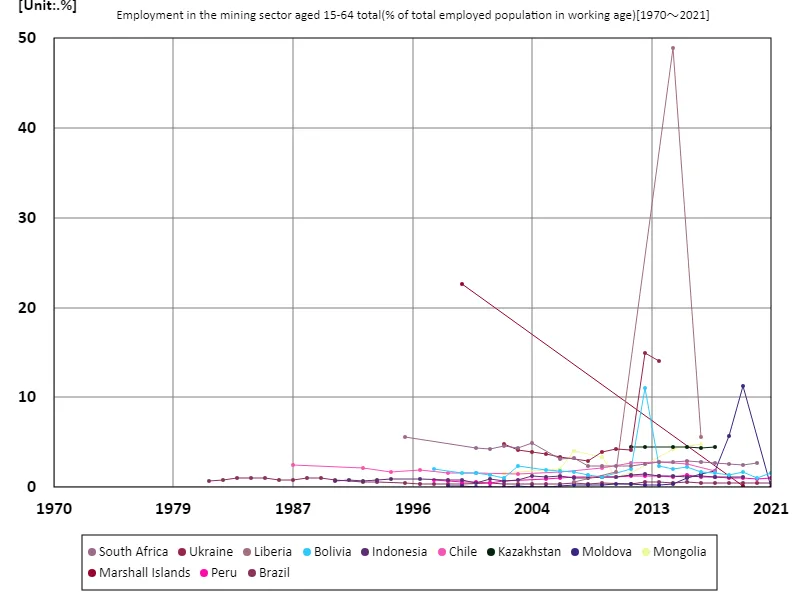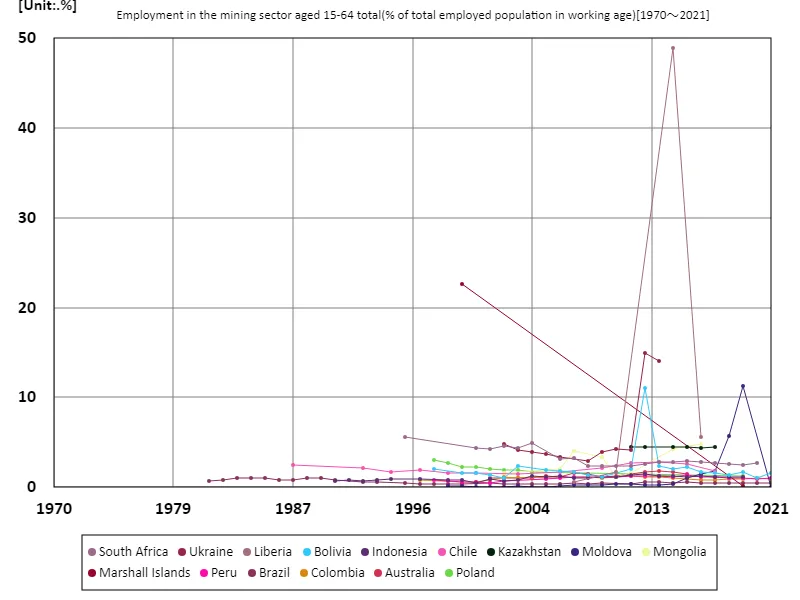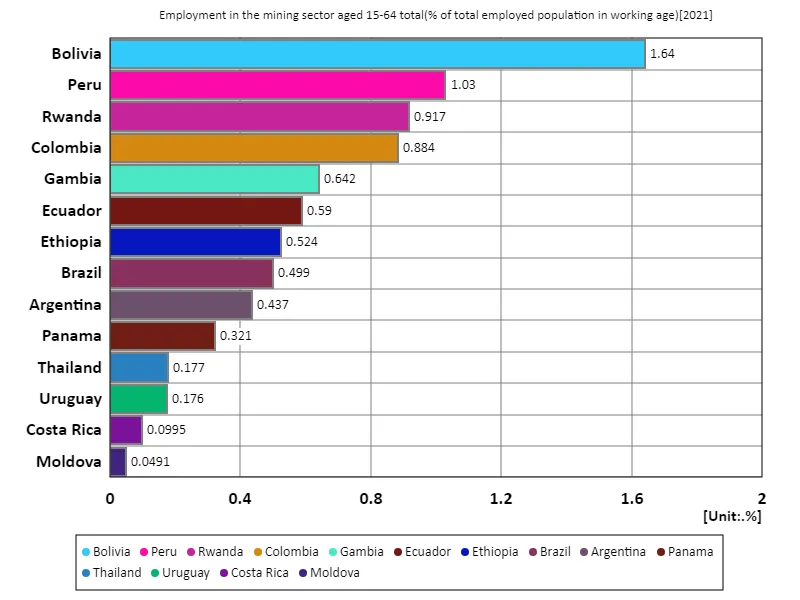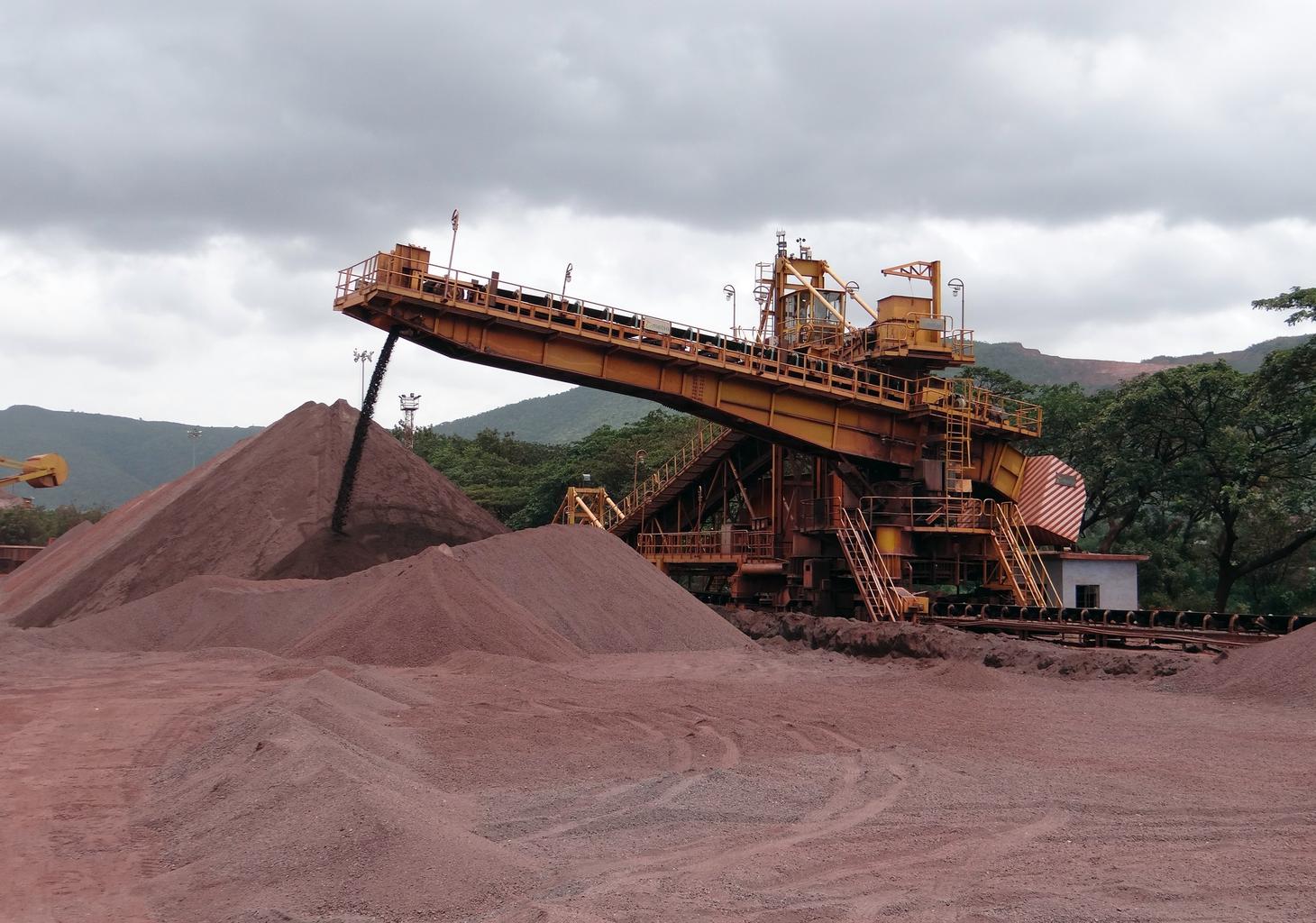- Abstract
- Employment rate for all 15-64 year olds in the mining sector (percentage of working age employed)
- Employment rate in the mining sector for all 15-64 year olds (percentage of working age employed population) (Worldwide)
- Employment rate for 15-64 year olds overall, mining sector (percentage of working age working population) (Worldwide, latest year)
- Reference
Abstract
The data showing that Bolivia’s mining sector has the highest employment rate at 1.64% provides important insights into the country’s economic structure. Bolivia is heavily dependent on mining, particularly mineral resources, and as such has a relatively high employment rate in the mining sector. Historically, mining has played an important role in the Bolivian economy, although mining jobs are typically highly skilled and labour intensive and therefore often represent a relatively small share of the overall labour market. The high employment rate in Bolivia’s mining sector compared to other countries suggests the country’s high dependence on mining and the associated peculiarities of its labor market.
Employment rate for all 15-64 year olds in the mining sector (percentage of working age employed)
The notable fluctuation in employment in Liberia’s mining sector between 1981 and 2021 is linked to the changing structure of the country’s economy and the role of mining. Employment in the mining sector peaked at 48.9% in 2014 but has since declined sharply, falling to 11.4% in 2021. This fluctuation suggests a shift in Liberia from a period of reliance on mining to economic diversification and growth in non-mining sectors. At its peak, mining was a major source of employment, but now this is likely due to declining mining profitability and production, or changes in policies. Overall, it can be said that the fluctuations in employment rates in the mining sector reflect the course of Liberia’s economic development and the changing relative importance of mining.


The maximum is 48.9%[2014] of Liberia, and the current value is about 11.4%
Employment rate in the mining sector for all 15-64 year olds (percentage of working age employed population) (Worldwide)
The large fluctuations in employment rates in Liberia’s mining sector between 1981 and 2021 are emblematic of the country’s economic transformation. The mining sector recorded an extremely high employment rate of 48.9% in 2014, reflecting a period when Liberia was heavily dependent on the mining industry. This peak indicates that mining was the major source of employment in the economy. However, in 2021, this percentage has fallen to 11.4%. This could be due to a decline in mining employment, a decline in mining profitability, price fluctuations in international markets, policy changes or economic diversification. Overall, the decline in employment in Liberia’s mining sector is indicative of economic transformation and growth in industries other than mining.


The maximum is 48.9%[2014] of Liberia, and the current value is about 11.4%
Employment rate for 15-64 year olds overall, mining sector (percentage of working age working population) (Worldwide, latest year)
According to 2021 data, the mining sector has the highest employment rate in Bolivia, at 1.64%. This reflects Bolivia’s economy’s strong reliance on mining, which represents an important source of employment. However, the global average is 0.57% and the total is 7.98%, meaning that the mining sector represents a relatively small minority of employment in many countries. Employment rates in the mining sector vary widely between countries due to differences in resource abundance, economic dependency, and industrial structure. It tends to be relatively high in resource-rich and mining-dependent countries, but low in many developed countries and those with diversified economies. Overall, the findings show that employment rates in the mining sector vary widely across geographies and economic backgrounds, with mining employment being a minority in less resource-dependent countries.


The maximum is 1.64% of Bolivia, the average is 570m%, and the total is 7.98%



Comments